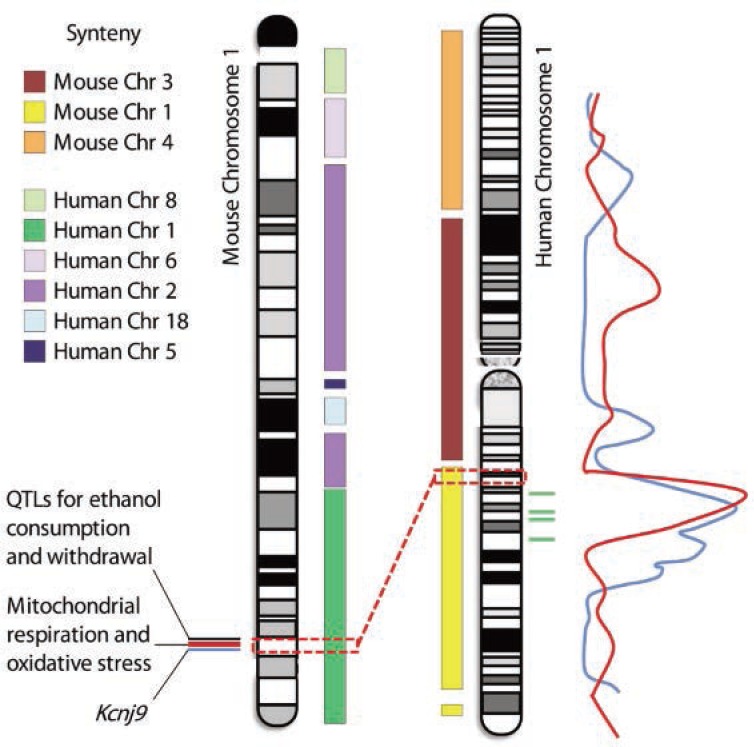Figure 1.
Potential synteny between mouse chromosome 1 and human chromosome 1 quantitative trait loci (QTLs). Human chromosome 1 shares primary conserved regions with mouse chromosomes 1, 3, and 4. Conversely, mouse chromosome 1 shares regions syntenic with human chromosomes 1, 2, 5, 6, 8, and 18. For both mouse and human chromosomes, additional smaller syntenic regions exist (not shown). Mouse chromosome 1 carries significant QTLs for physiological dependence and associated withdrawal following chronic and acute ethanol exposure, two of which have been finely mapped to small DNA intervals of 0.44 and 1.7 Mb (see blue and red lines next to mouse chromosome 1). High-quality quantitative trait gene (QTG) candidates have been identified within these two intervals, including Kcnj9 and genes involved in mitochondrial respiration and/or oxidative stress. (Denmark and Buck 2009; Kozell et al. 2009). Another QTL for ethanol consumption and withdrawal has also been detected nearby (see black line) but has not yet been finely mapped. The dashed red boxes and line denote the two finely mapped mouse QTL intervals and the syntenic region of human chromosome 1 (1q23.2–1q23.3). Two human QTL studies have determined peak log of the odds of linkage (LOD) scores for alcoholism (red line; Hill et al. 2004) and for age of onset of drinking, harm avoidance, novelty seeking, and alcohol dependence (blue line; Dick et al. 2002) in this human chromosome 1 region. Four genetic markers (rs1229430, rs2001270, rs3753563, and rs84465) that are associated (P < 0.0001) with heaviness of drinking, alcohol use disorder, and/or alcohol dependence (Heath et al. 2011) are located in that same region (green lines). Thus, one or more human QTLs may be narrowed to a small syntenic interval of human chromosome 1 that harbors the homologs of high-quality QTG candidates identified in mice.

